One night a week and a half ago, when much of the world was watching the final “American Idol” showdown between Adam Lambert and Kris Allen or viewing the finale of “Dancing with the Stars,” almost a hundred of us were at the local native plant society meeting to hear Kristie Orosco. Environmental Director for the San Pasqual Band of Kumeyaay Indians, ethnobotanist, and member of the Native American Environmental Protection Coalition, our speaker gave us a quick introduction to how some of the local Native Americans traditionally used plants in their environment as food.
She was one of those rare communicators, a person who with a very few words can take you into a different way of thinking and seeing the world. One thing she said, in particular, has stuck with me. Instead of stating that a plant blooms, she used the phrase that a plant “gives it flowers.” What a gorgeous way to phrase it: Instead of a plant being an inert blooming machine that you pick up for a few bucks at the nursery and toss when it turns ugly, it was a living entity that gives of itself by producing flowers.
How you say something is as important as what you say, and her words opened up a world to me where everything in nature is a gift. Although I’ve developed a cynical side to my personality, I’ve tried to counter it by keeping alive a part of me that continues to stay amazed at the things of the natural world and almost willfully naive about many of the ways of humankind. It’s that second side of me that’s certain that the earth would be a lot better off than it is if we all spoke and viewed the landscape the way Kristie Orosco did.
You often read that the plants you encounter in the wilds have traditional uses, but it’s not until you’ve had direct experience with the uses that the connection really clicks. To cement that connection, our speaker brought foods for all of us to try, enough to cover several large tables.
On the menu:
- Shaawii, or acorn pudding (pink, looks like spam but it’s actually edible–and subtly tasty)
- Pit-roasted agave root (something like a chewy, smoky vegan beef jerky–my favorite of the night)
- Limeade with seeds of chia (Salvia columbariae)
- “Medicine tea” (steeped dried flowers from Mexican elderberry, Sambucus mexicanus, very delicately flavored, used for a number of purposes, including breaking a fever)
- Yucca root (starchy, but different from potatoes in flavor)
- Yucca flowers, boiled (the blooms of Hesperoyucca whipplei, which is finishing up giving its flowers in many of our hillsides around town; very delicate flavor with a tiny nip of bitterness, brussels sprouts for people who don’t like brussels sprouts, or a new food for people who love artichoke hearts)
- Yucca flowers, raw (as above, only crunchier, a little more bitter)
I’ve always admired plants of Hesperoyucca whipplei from a distance–The ends of its leaves end in sharp points that you have to show immense respect. Now that I’ve tasted its root and sampled its flowers and heard Kristie Orozco speak about the plant, my aesthetic appreciation of it has deepened into something else much richer.

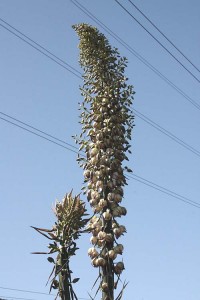
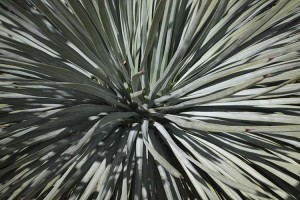

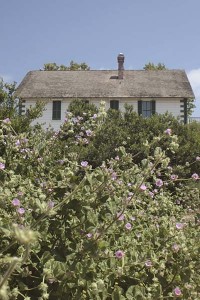
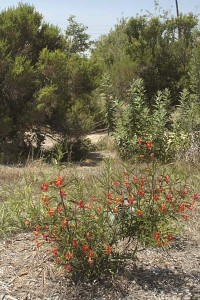
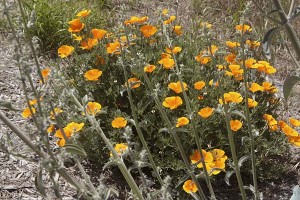
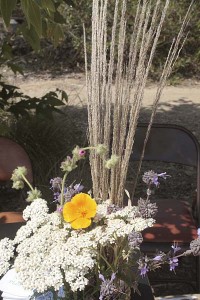
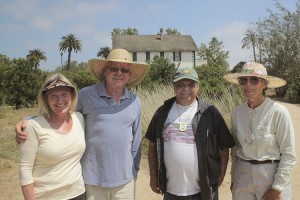


 Photo by Dlarsen, via Wikimedia Commons [
Photo by Dlarsen, via Wikimedia Commons [ 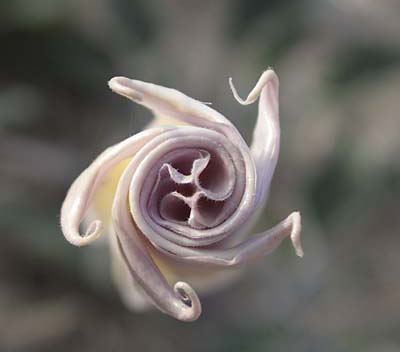

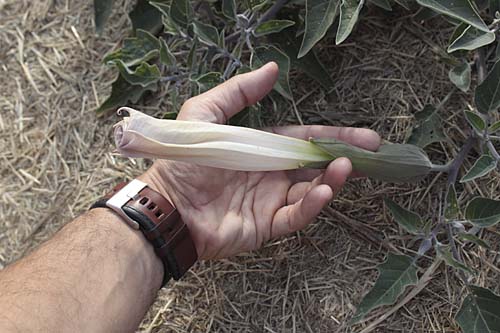
 Photo from the Wikimedia Commons, contributed by Eugene van der Pijll [
Photo from the Wikimedia Commons, contributed by Eugene van der Pijll [